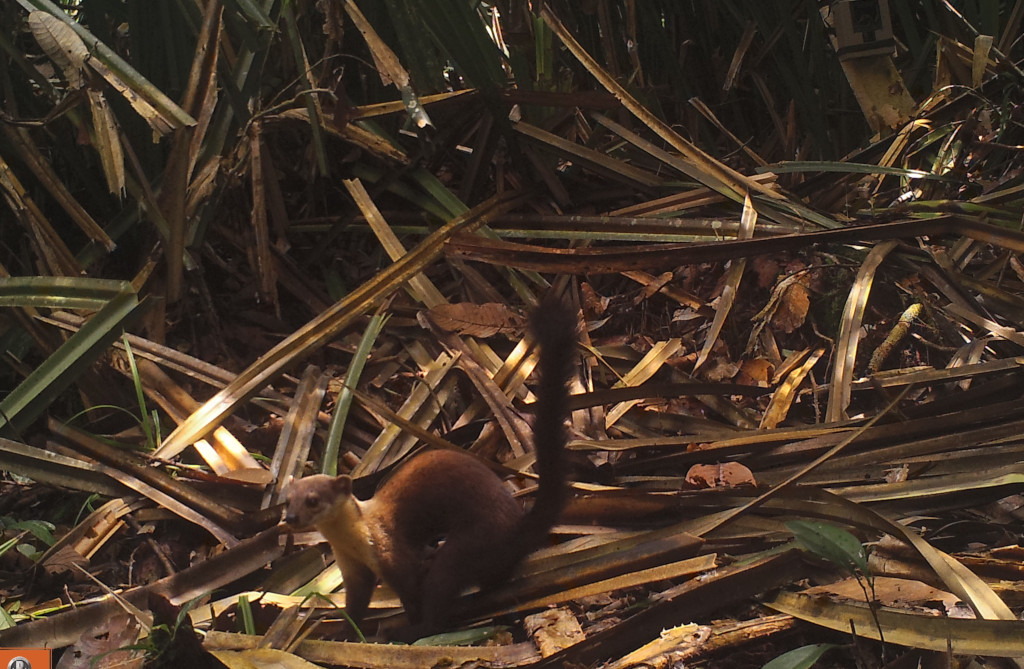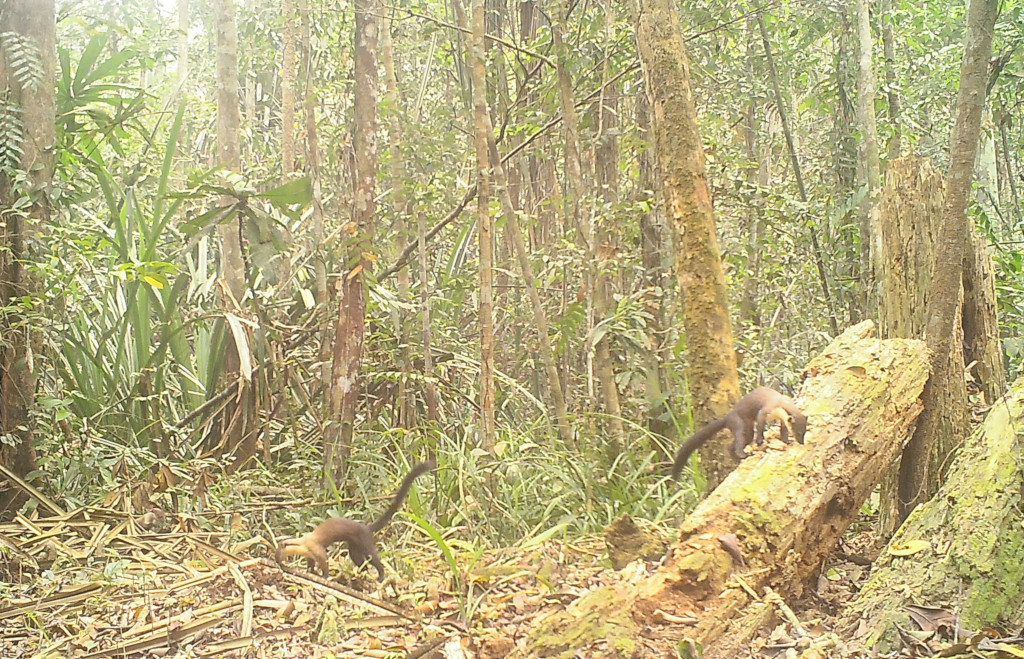Maret 02, 2022
Mari berkenalan dengan Musang Leher Kuning (Martes flavigula) yang dikenal juga dengan nama kharza. Satwa ini banyak ditemui di wilayah Asia bagian timur dan selatan. Spesies ini termasuk dalam family Mustelidae yang merupakan mamalia karnivora. Kharza juga merupakan salah satu spesies yang teridentifikasi berada di area Restorasi Ekosistem Riau di Semenanjung Kampar.

Musang Leher Kuning cukup banyak ditemukan di dalam hutan. Mereka menyukai hutan dengan vegetasi campuran yang terdiri dari pepohonan cemara dan pohon-pohon berdaun lebar. Mereka juga gemar mendiami rawa-rawa dan dataran rendah.
Karakteristik
Musang Leher Kuning adalah mamalia arboreal yang terkenal dengan penampilan berotot dan fleksibilitas tubuh mereka. Tubuh mereka yang kuat membuat mereka tak mudah takut, di samping fakta bahwa mereka hanya memiliki sedikit predator alami. Meski memiliki perawakan yang cukup menggemaskan, mamalia ini terbilang cukup ganas.
Spesies ini memiliki bulu berwarna cerah yang terdiri dari perpaduan warna putih, hitam, coklat, dan kuning keemasan. Sesuai namanya, bulu di sekitar dada dan tenggorokan spesies musang ini umumnya berwarna kuning keemasan, sedangkan ekornya sebagian besar berwarna gelap hitam atau coklat.
Spesies ini juga memiliki kepala yang runcing, leher panjang dan ekor yang lebih panjang lagi. Panjang ekor mereka dapat mencapai sekitar dua pertiga dari panjang tubuh mereka. Panjang tubuh musang jantan dewasa berkisar antara 50 hingga 71,9 cm dengan bobot tubuh antara 2,5 hingga 5,7 kg.
Sedangkan yang betina sedikit lebih kecil dengan panjang 50 hingga 62 cm dengan bobot tubuh sekitar 1,2 hingga 3,8 kg, membuat perawakan para betina terlihat lebih ramping dan pendek.
Perilaku dan makanan
Musang Leher Kuning umumnya memiliki wilayah teritorial yang luas namun hanya sementara ditempati. Mamalia omnivora ini berpatroli di sekitar wilayah teritorialnya yang dapat menempuh jarak 10-20 km dalam sehari.

Meski Musang Leher Kuning lebih banyak menghabiskan waktu berburu mangsa dan mencari makanan di permukaan tanah, spesies ini merupakan pemanjat andal. Mereka bahkan mampu melompat sejauh sembilan meter dari satu dahan pohon ke dahan lainnya.
Musang Leher Kuning kawin dua kali dalam setahun, sekitar bulan Juni akhir dan awal Agustus. Ketika musim kawin, para jantan akan saling bertarung untuk mendapatkan perhatian dari betina. Musang Leher Kuning betina akan melahirkan dua hingga tiga bayi.
Spesies menggemaskan namun agresif ini adalah pemburu di siang hari atau disebut juga diurnal, namun mereka pun cukup aktif di malam hari. Mereka cenderung lebih sering berburu bersama kawanannya dan akan mengejar lalu memojokkan mangsanya ke sungai, di mana akan lebih mudah bagi mereka untuk mendapatkan mangsanya.
Mereka memburu tikus, ular, kelinci, kadal, dan juga memakan telur-telur burung yang bersarang di permukaan tanah seperti burung pegar, namun mereka juga dilaporkan kerap memangsa kucing dan hewan ternak.
Peran dalam ekosistem
Musang Leher Kuning adalah omnivora, artinya mereka tidak hanya memburu satwa-satwa yang lebih kecil namun juga memakan buah-buahan, kacang-kacangan, hingga madu bunga. Oleh karena itu, spesies ini juga berperan sebagai penyebar benih yang efektif bagi ekosistem. Bahkan, mereka cenderung lebih memilih untuk memakan buah-buahan dibanding berburu mangsa.
Menurut Daftar Merah IUCN, Musang leher kuning dikategorikan sebagai spesies dengan status konservasi Risiko Rendah karena jumlah populasinya yang cukup stabil.
Spesies ini juga merupakan salah satu dari 76 mamalia yang tercatat berhabitat di wilayah RER.